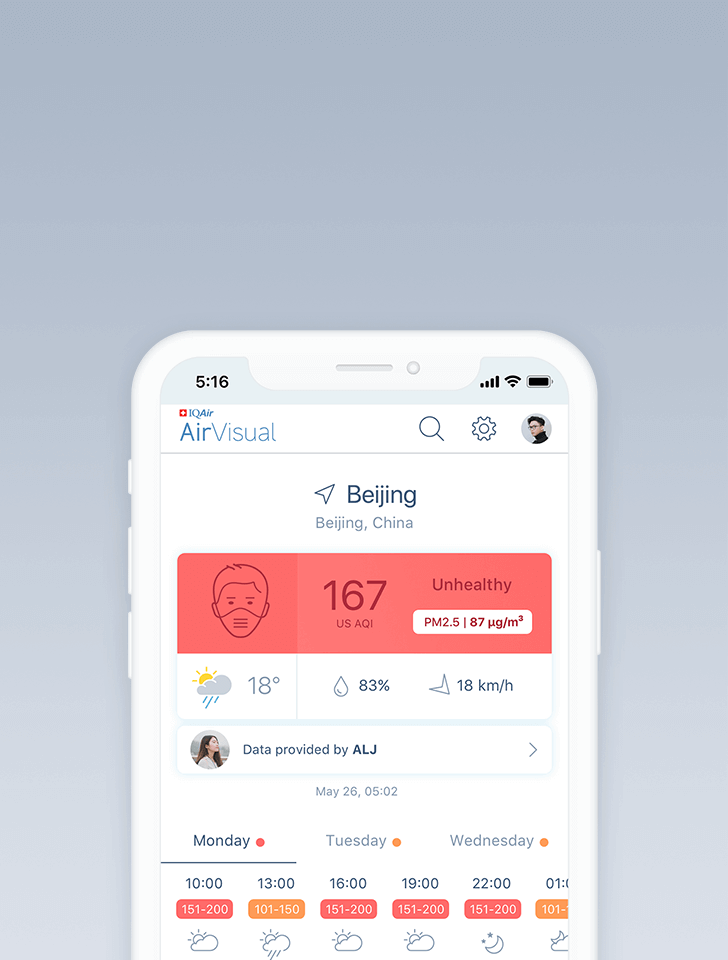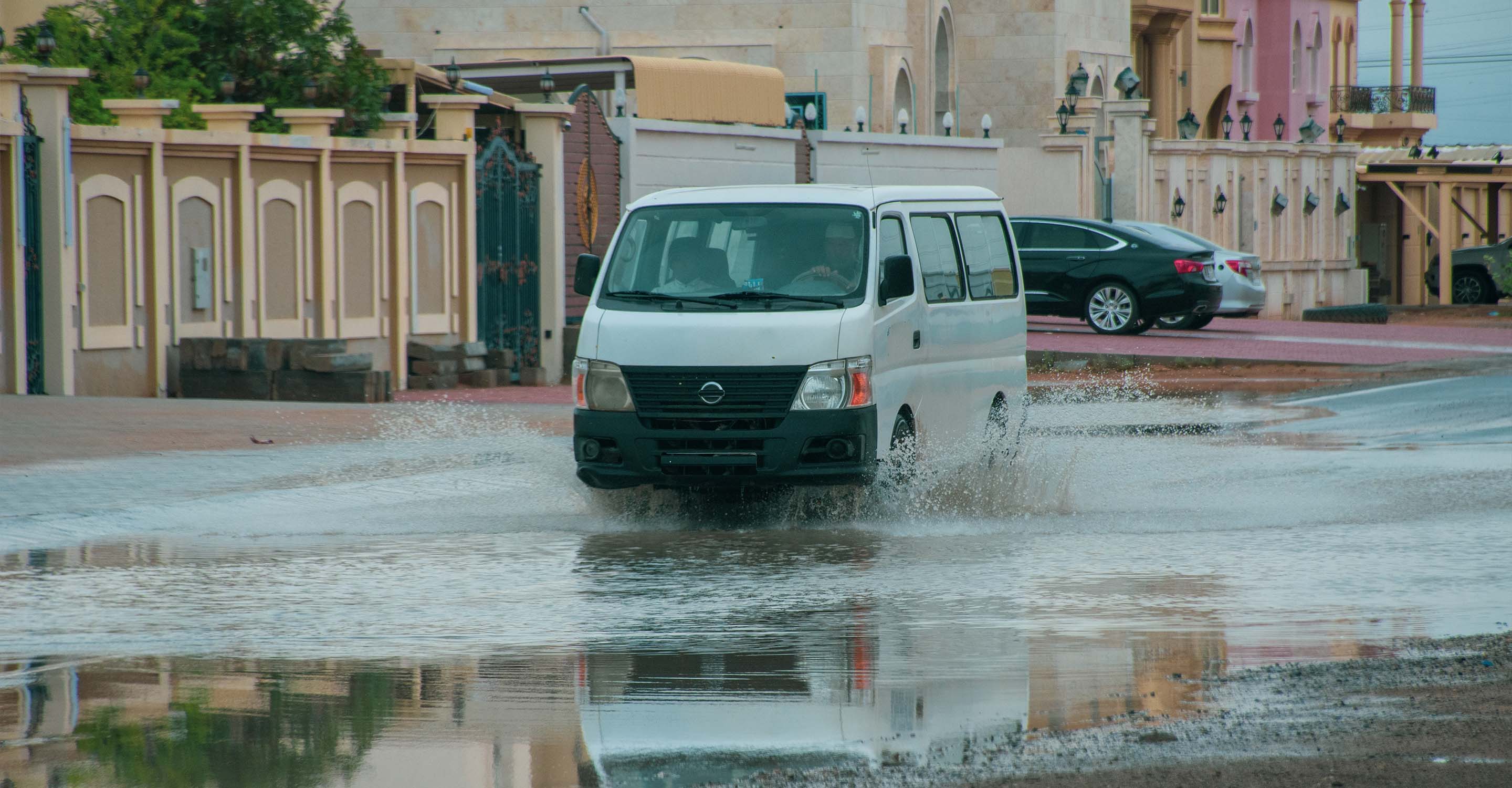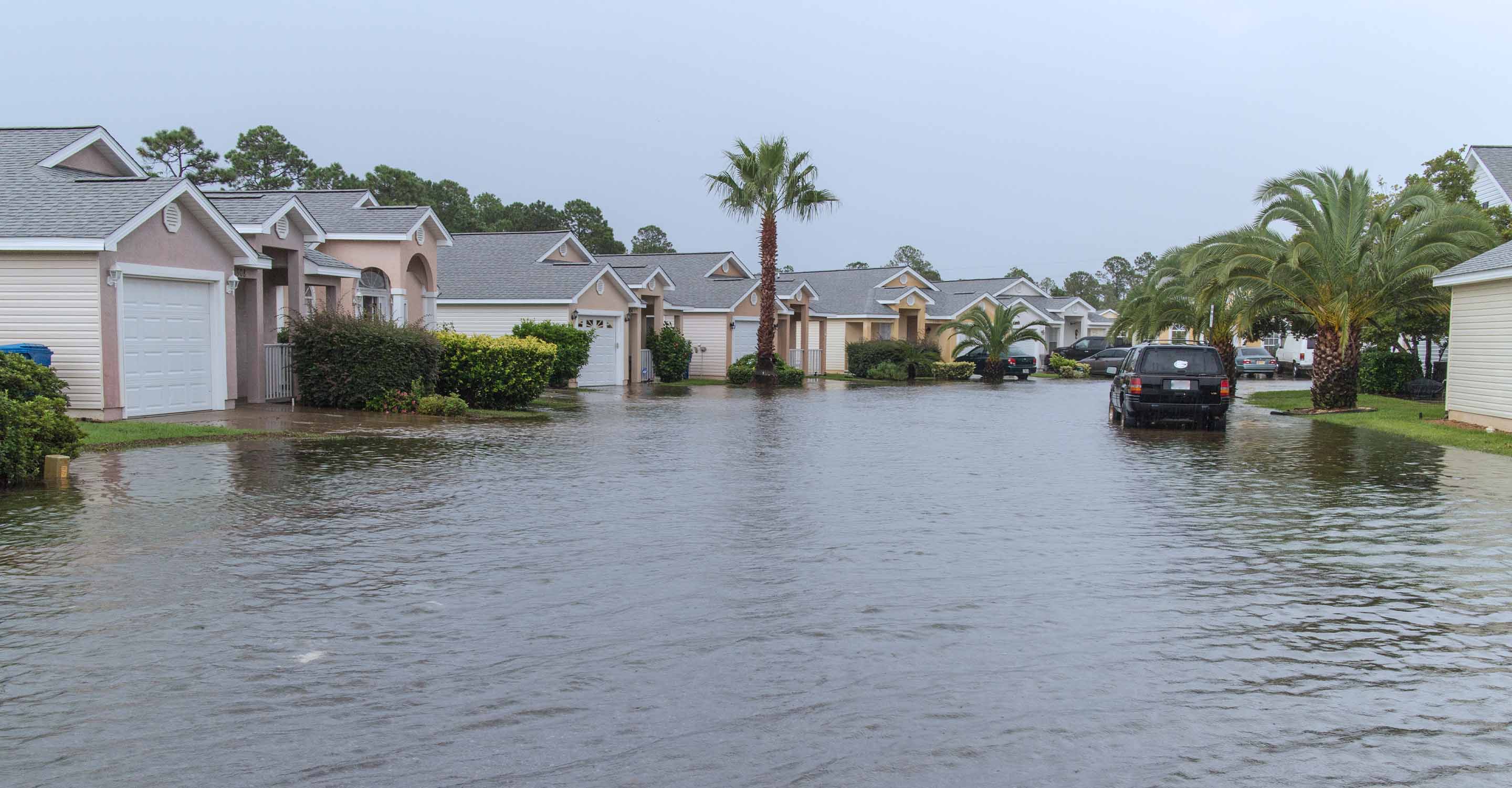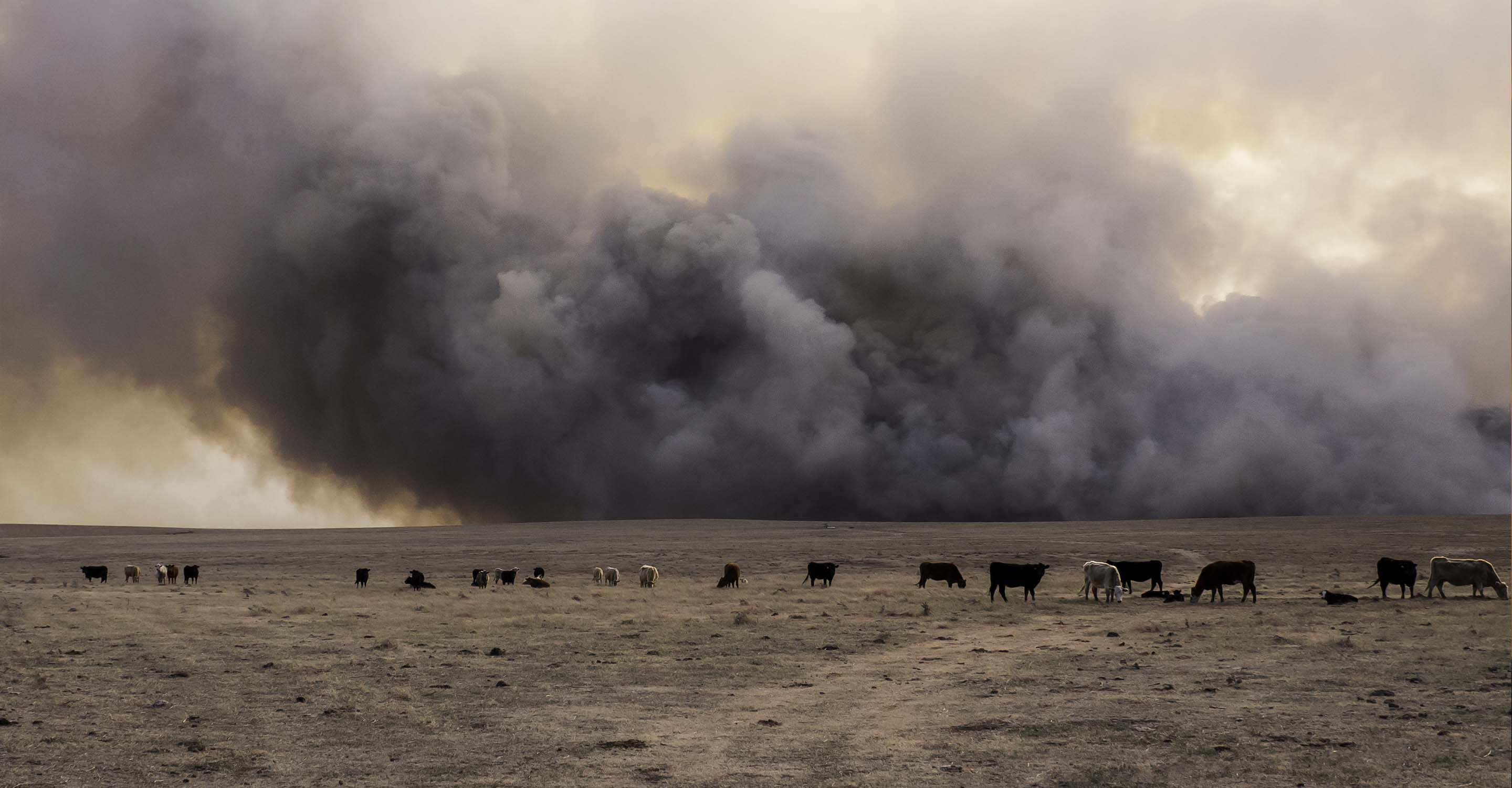Air quality in Heze
Air quality index (AQI) and PM2.5 air pollution in Heze
2K people follow this city

Heze Air Quality Map
Real-time Heze air pollution map
Weather
What is the current weather in Heze?
| Weather | Clear sky |
| Temperature | 55.4°F |
| Humidity | 64% |
| Wind | 7.9 mp/h |
| Pressure | 29.9 Hg |
live aqi city ranking
Real-time China city ranking
| # | city | US AQI |
|---|---|---|
| 1 | Kashgar, Xinjiang | 224 |
| 2 | Baoding Shi, Hebei | 159 |
| 3 | Binzhou, Shandong | 158 |
| 4 | Yigou, Henan | 158 |
| 5 | Yangliuqing, Tianjin | 157 |
| 6 | Daxing, Beijing | 156 |
| 7 | Fangshan, Beijing | 156 |
| 8 | Daqing, Heilongjiang | 154 |
| 9 | Tianjin, Tianjin | 154 |
| 10 | Dingzhou, Hebei | 153 |
(local time)
SEE WORLD AQI RANKING3D animated air pollution map

live Heze aqi ranking
Real-time Heze air quality ranking
| # | station | US AQI |
|---|---|---|
| 1 | Municipal meteorological bureau | 122 |
| 2 | Shi zhengxie | 122 |
| 3 | Heze Medical College | 97 |
(local time)
SEE WORLD AQI RANKINGUS AQI
122
live AQI index
Unhealthy for sensitive groups
Overview
What is the current air quality in Heze?
| Air pollution level | Air quality index | Main pollutant |
|---|---|---|
| Unhealthy for sensitive groups | 122 US AQI | PM2.5 |
| Pollutants | Concentration | |
|---|---|---|
| PM2.5 | 44µg/m³ | |
| PM10 | 135µg/m³ | |
| O3 | 82µg/m³ | |
| NO2 | 25µg/m³ | |
| SO2 | 9µg/m³ | |
| CO | 500µg/m³ | |
PM2.5
x8.8
PM2.5 concentration in Heze is currently 8.8 times the WHO annual air quality guideline value
Health Recommendations
What is the current air quality in Heze?
| Reduce outdoor exercise | |
| Close your windows to avoid dirty outdoor air GET A MONITOR | |
| Sensitive groups should wear a mask outdoors GET A MASK | |
| Run an air purifier GET AN AIR PURIFIER |
Forecast
Heze air quality index (AQI) forecast
| Day | Pollution level | Weather | Temperature | Wind |
|---|---|---|---|---|
| Monday, Apr 15 | Unhealthy for sensitive groups 126 AQI US | 78.8° 55.4° | ||
| Tuesday, Apr 16 | Unhealthy for sensitive groups 108 AQI US | 78.8° 51.8° | ||
| Wednesday, Apr 17 | Moderate 97 AQI US | 77° 55.4° | ||
| Today | Unhealthy for sensitive groups 122 AQI US | 77° 55.4° | ||
| Friday, Apr 19 | Moderate 87 AQI US | 80.6° 53.6° | ||
| Saturday, Apr 20 | Unhealthy for sensitive groups 104 AQI US | 60.8° 53.6° | ||
| Sunday, Apr 21 | Moderate 90 AQI US | 73.4° 48.2° | ||
| Monday, Apr 22 | Moderate 76 AQI US | 77° 53.6° | ||
| Tuesday, Apr 23 | Moderate 90 AQI US | 77° 55.4° | ||
| Wednesday, Apr 24 | Moderate 98 AQI US | 71.6° 53.6° |
Interested in hourly forecast? Get the app
AIR QUALITY ANALYSIS AND STATISTICS FOR Heze
What are the air pollution levels like in Heze?
Heze is a city located in Shandong province, China. Formerly known as Caozhou, it is home to over 8.2 million people, and is also subject to some extremes of pollution throughout the year. Whilst there are certain months in which the air quality becomes somewhat better, Heze has repeatedly shown to have sporadic and fluctuating levels of air pollution, with lows whereby the air quality becomes far cleaner (relatively speaking), and highs that indicate that the air is full of smoke, haze and other dangerous contaminants.
Looking at the US AQI reading taken in late April of 2021, it can be seen that Heze came in with a reading of 68 at that particular time, a number that would place it into the ‘moderate’ pollution ratings bracket. Whilst this represents a time period in which Heze is going through one of its cleaner episodes, one need only look at the surrounding days and months to see the huge spikes in pollution levels that are on record.
Throughout both March and April, Heze came in on many occasions with much higher US AQI readings, with ‘unhealthy’ readings present that typically sat between 158 and 196, meaning that the air would be quite detrimental to breathe, particularly for certain demographics of the population, such as the elderly and infirm, as well as young children, pregnant mothers and those with pre-existing health conditions.
Whilst these readings represent a poor level of air quality in their own right, there were also the extreme highs of US AQI readings such as 496, 454 and a massive 989 that came in over the two aforementioned months. These readings would classify the air in the city as being ‘hazardous’, indicating that breathing air this polluted would outright cause numerous adverse effects, both of the short and long term variety.
Whilst a reading as high as 989 would be enough to be damaging to even the healthiest of individuals, it is of note that these readings are more random in nature, and tend to occur with greater infrequency. When they do occur, preventative measures such as the wearing of particle filtering masks and avoiding all outdoor activity become extremely important, and staying up to date on these highly pollutive episodes.
Observing the data also collected over the course of 2020 as a bigger picture in regards to Heze’s yearly pollution levels, the city came in with a PM2.5 reading of 54.2 μg/m³ as its yearly average. This reading placed it into the upper reaches of the ‘unhealthy’ for sensitive groups bracket, which requires a PM2.5 reading of 35.5 to 55.4 μg/m³ to be classified as such (being only a few units away from moving up into the ‘unhealthy’ ratings group which starts at 55.5 μg/m³). This reading placed Heze in 16th place out of all cities ranked in China, as well as in 67th place out of all cities worldwide. As such, Heze has a long way to go to see improvements in its air quality, and although as mentioned there are time periods in which the air clears itself out somewhat, these are highly offset by the huge spikes in air pollution that occur, for various reasons that will be discussed in short.
What causes higher levels of polluted air in Heze?
Heze has a number of different sources of pollution occurring within the city limits, all of which would combine to see the higher levels of both US AQI and PM2.5 on record, with certain months of the year having these higher readings due to both human and industrial activity, as well as meteorological conditions playing a role.
Both US AQI and PM2.5 are prominent units of measurement for air pollution, with US AQI being a composite of several different pollutants, calculated into a number via the amount of these pollutants present in the air ,with ones such as nitrogen dioxide (NO2), ozone (O3) and PM10 being used in the calculation. PM2.5 itself is also used in the calculating of the overall AQI level, but its also a prominent measure in its own right, and as such both can be used, with PM2.5 gaining this prominence due to the great danger it poses to human (and animal) health when inhaled. PM2.5 refers to particulate matter that is 2.5 micrometers or less in diameter, and due to this small size can penetrate deep into the lung tissue and even enter the blood stream, causing a myriad of health issues that will be discussed in short.
The main causes of air pollution in Heze are vehicles, with ones such as regular cars as well as freight vehicles such as trucks and lorries being taken into account. Industrial activity also ranks highly, due to the mass burning of fossil fuels such as coal and natural gas, as well as the subsequent industrial effluence these sites give off. Other sources of particulate matter pollution are ones that come from construction sites, road repairs, building demolitions and general dust or coarse particles that build up on the roads over time, as well as stemming from areas that see the disturbance of large amounts of earth.
When does Heze have the worst levels of air pollution?
Heze experiences its worst levels of air pollution in the first and last two months of the year, with January and February, as well as November and December having the highest PM2.5 readings. All of these came in within the ‘unhealthy’ ratings bracket, with January taking the top spot with a sizeable reading of 125.7 μg/m³. December followed closely with its own large reading of 92.8 μg/m³.
Does Heze have clean air at all during the year?
The months of May through to September, or more accurately the mid months of the year, all came in with the lowest readings of PM2.5, with May, August and September having the cleanest readings, all sitting within the ‘moderate’ pollution ratings bracket (12.1 to 35.4 μg/m³ required). August was the cleanest month recorded over 2020 with a PM2.5 reading of 29.8 μg/m³.
What are some health issues associated with breathing polluted air in Heze?
Some health issues would be ones typically related to respiratory and cardiac conditions, as well as many skin conditions also being possible such as atopic dermatitis and acne due to aggravation and irritation from chemical pollutants.
Others include dry coughs and persistent sore throats, as well as chest pains and subsequent infections. Respiratory ailments such as bronchitis, pneumonia, emphysema and asthma would all become common place, especially amongst the younger portion of the population, who are going through their vital formative years and are hence extremely vulnerable to lung or other organ damage, which is widespread throughout the body when high levels of pollution exposure occur.





